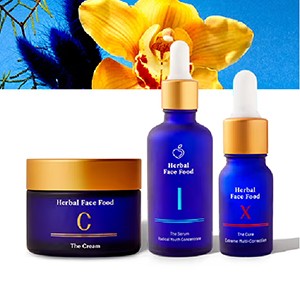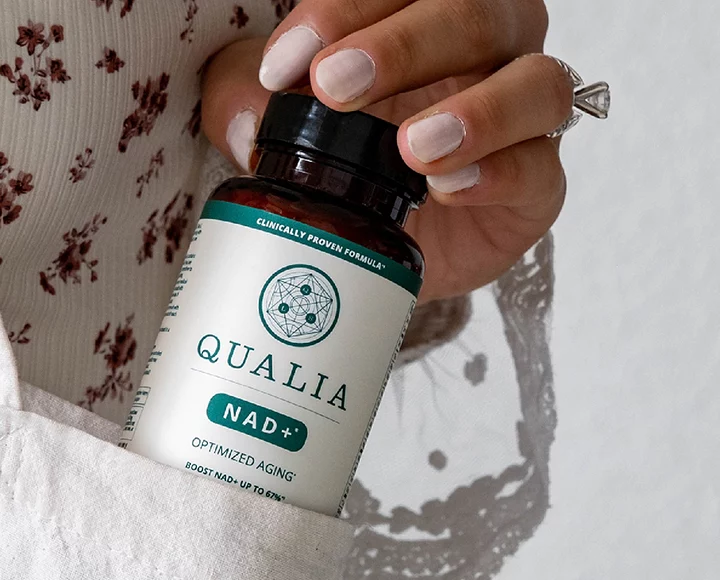What’s really happening in the body when we dream? Dreams have been regarded as natural expressions and impulses from the origin of our mind. Ancient civilizations saw dreams as portals for receiving wisdom from the gods.
Anima Mundi founder, Adriana Ayales is talking to us about the fascinating topic of lucid dreaming, including an herbal tea and elixir to encourage lucid dreaming…
What Is Lucid Dreaming?
A lucid dream is when you wake up to the fact that you’re dreaming, but remain in the dream. Meaning, you’re dreaming and you know it.The conscious mind is winding down, and the subconscious mind is activating, creating a bridge – and you’re standing in the middle. Many find this to be a powerful experience allowing them to take full control a dream and create anything they want.
Tibetan Buddhists and yogis have been aware of lucid dreaming for centuries, classically referred to as “dream yoga.”
What’s Happening In The Body When We Dream?
REM sleep and lucid dreaming have been studied in connection with the hypothalamus, pituitary gland and pineal gland. Let’s take a moment to first analyze the anatomical aspects of what happens when we dream. These three organs are sometimes called the ‘Organs Of Perception’:
THE PINEAL GLAND | The pineal gland, said to be shaped like a pinecone, is located in the center of the brain, behind and above the pituitary gland is immersed in cerebrospinal fluid (CSF), and it’s known to have more blood flow per cubic volume than any other organ in the body. This in turn means it’s perhaps the gland with highest concentration of energy in the entire body. The pineal gland is well known as the body’s dominant source for melatonin.
MELATONIN is activated by darkness and inhibited by light. Melatonin is a significant neurochemical that affects our mood, our circadian rhythms, determines the quality of our sleep, and affects immune function. When melatonin levels are disrupted, people can experience mood swings, insomnia, depression, and seasonal disorders. (One of the main disruptors to melatonin is too much screen time).
Melatonin, serotonin, pinoline, DMT and more, are the neurochemicals secreted within the pineal gland, which are said to be consciousness expanding chemicals.
In terms of spiritual experiences, melatonin quiets the body and mind, allowing access to higher consciousness. Both pinoline and DMT, secreted by a healthy, activated pineal gland, can be psychoactive, causing profound changes in perception, mood, consciousness, and behavior. Pinoline enables visions and dream states in the conscious mind and has been used by ancient Egyptians in their rituals.
This is why neuroscientists hold that the pineal gland is perhaps the master gland where consciousness itself is said to originate from, as these vital neurochemicals coordinate vital physical and emotional processes on a cellular level.
THE HPA AXIS – THE HYPOTHALAMUS | The hypothalamus is about the size of an almond and is located at the very center of our brain. It’s known as the master control center to both our endocrine and nervous system. It plays a central role in not only linking the two, but activating the well known pineal gland (aka third eye). It is also directly connected to our limbic system, known as the center of our emotions.
The hypothalamus signals the pituitary gland, which operates like its general assistant, and together they have the ability to affect most of the major systems and organ functions, regulating all of our basic survival processes, including our hormonal makeup, along with our body temperature, hunger, growth, sleep circadian rhythms, our general stress response, and lots more.
THE PITUITARY GLAND | The pituitary gland is also a tiny gland, about the size of the pea, that activates once it receives essential neurohormones from the hypothalamus. In turn the pituitary gland is said to signal and activate the pineal gland.
The pituitary gland sits right below the hypothalamus, and it’s known to have two major lobes that are different anatomically and functionally. The posterior lobe does not produce hormones, but stores and releases two important ones made in the brain: oxytocin and vasopressin. Oxytocin fosters maternal instincts, bonding between mates, trust, and sexual pleasure. Vasopressin influences circadian rhythms, the reabsorption of water into the bloodstream, and also stimulates paternal protective and caring instincts
7 Herbs + Teas That Support Lucid Dreaming
Anima Mundi makes a Lucid Dreamers Toolkit with Lucid Dream Tea, Wild Lucid Dreaming Elixir, Blue Lotus, incense and more. This kit is designed to encourage lucid dreaming, restful sleep, calm and tonify the nervous system.
Lucid Dream Tea is filled with nervine (relaxing) herbs that have been used since ancient times to assist the body in entering deep states of meditation and sleep. These herbs can potentially exalt alpha and theta brain waves, creating a profound lucid dreaming atmosphere.
Lucid Dreaming Elixir is a deeply nourishing and soothing nighttime tonic composed of herbs known to support pituitary and hypothalamic function, while being a nervous system decompressor.
Blue Lotus | The Lucid Dreaming Toolkit
PASSIONFLOWER (Passiflora incarnata) Passionflower has many studies proving its effectiveness as a nervine (nervous system relaxant), as a support for insomnia, and as a general sleep aid. Passionflower can be a wonderful dreamtime ally for those of us who feel a sense of frayed nerves, excessive stress, anxiety, or general agitation. As a spirit medicine it’s known to open the upper chakras, and attune the mind to higher frequencies.
KAVA KAVA (Piper methysticum) is an intriguing herb that can create mild psychotropic qualities when taken in larger amounts. Traditional peoples drunk the root and vine ceremonially in Vanuatu and other Pacific islands as an intoxicating beverage to commune with spirits and gods, and to essentially access higher states of consciousness. But not to worry, in regular to small dosages, it is slightly euphoric and very calming. I love pairing it with other herbs for deep relaxation like Ashwagandha, Chamomile and Blue Lotus. You can find our special Hawaiian Kava in our Dream Elixir and Tea.
CALEA (Calea Zacatechichi) Long been used in traditional folk medicine in Central America for a variety of reasons. Research, and anecdotal evidence from indigenous peoples, has proven Calea to effectively increase dream clarity and vividness. Also called ‘ leaf of god’, this very bitter plant is ideal for lucid dreaming since it has an impact on the dream symbology, the realism of the dream itself, and dream recall. Be aware that this tea is very, very bitter. When making your evening potion use as an ‘energetic dose’ (microdose) along with other dream herbs, like Blue Lotus and Shizandra, or make a tincture and enjoy in small doses at first to get used to it.
BLUE LOTUS (Nymphaea caerulea) Egyptians, Mayans and many other cultures that grew this precious flower, used is as a consciousness expanding plant. Blue lotus was believed to be a highly revered mystical plant in ancient Egypt and was used by the priesthood for its health-promoting qualities as well as an herb for spiritual sacrament It has been used not only for sleep aid, but also as a natural anti-anxiety remedy, and as a stress reliever. Blue Lotus contains nuciferan along with aporphine, which will give you feelings of calming euphoria (the perfect combo if you ask me!)
SHIZANDRA BERRIES (Shisandra chinensis) Schizandra is an adaptogenic herb with thousands of years of use and called the “quintessence of tonic herbs” by Taoist masters. It is the only herb known to be perfectly Yin-Yang balanced, to contain all three Treasures (Jing, Qi and Shen), to nurture all five Elements (Wood, Fire, Earth, Metal and Water) and to enter all twelve energy channels (meridians) of the human body.
Schizandra also circulates in the “extraordinary channels” and facilitates the three main “dan tian” (energy centers of the body). Schizandra is a masterful shen tonic known to deeply increase vitality and rejuvenation, while also being deeply calming to the spirit. Shizandra has been studied to improve eyesight, and interestingly enough Taoist masters used it to increase intuition and psychic sight. Within the dreamspace, many have used this precious berry to increase clarity, memory and dream recall.
MUCUNA (Mucuna pruriens). Mucuna is an adaptogenic legume with many healing abilities. Mucuna pruriens contains high levels of naturally occurring L-dopa, which is the precursor to dopamine. Dopamine is an important neurotransmitter that is essential for sleep, memory, mood, mental functions, and calming the nervous system. Mucuna, because it directly targets the neurotransmitters within the pineal gland (our third eye), said to be the master regulator of consciousness, it has been used as an ‘oneirogen’ dream plant, to activate visions, dream recall and relaxation.
8 Lucid Dreaming Techniques
If practiced diligently, techniques like the ones below will eventually enable you to engage in lucid dreaming frequently (or whenever you want). Approach this practice as a dream laboratory where you’re exploring your mind. Enter it without expectation, and create the practice around it to program the mind.
To extend or stabilize lucid dreams requires that you keep the dream going and not wake up or maintain lucidity (don’t fall into ordinary, non-lucid dreaming). Once you’re able to maintain a lucid dream for a few seconds, you may notice the dream scenario begins to break up. There are a number of techniques you can apply to stimulate your senses and revive the integrity of dream contents. Techniques derived from meditation for creating a vividness of consciousness can also be applied to your dreams to enhance their intensity.
THE POWER OF MOTIVATION | Make positive affirmations throughout the day in regards to lucid dreaming; this can generate significant accomplishment. It not only reminds the mind about your dreams but helps you access your intention with precision. Say your intention is to see an aspect of your future, your mind state throughout the day should be I want to see my future tonight. Say it out loud and often throughout the day. At the beginning some people set a timer on their phone as a reminder (for example, every two to three hours) to check in on your night’s intention.
PROSPECTIVE MEMORY | Planning ahead and imagining an outcome during the day helps you imagine becoming lucid in a dream. Imagine it as if you’re in the Avatar movie, and imagine the sensorial difference that world would be compared to your current waking life. Try programming your mind on the sensorial difference in particular. What does it feel like? What does it look like for you? Lean into what that feeling might be, imagine yourself immersed in it, and receive what you intend to receive.
NOTING DREAM SIGNS | Set small symbolic moments where you tap into the dream. A classic one is to look at your hands. For some reason when you look down in a dream the veils slim enough that it’s an easy reminder that you’re dreaming. A classic tool is an intention of looking at your hands (or feet) to instantly recall that you’re dreaming. It’s helpful to set it in your mind and every time you look at your hands or feet repeat, I’m dreaming or This is a dream. Every time you become successful at a dream sign (whether it was pre-planned or spontaneous) write it down the next day in your dream journal.
PERFORMING STATE CHECKS | Throughout the day ask yourself, Am I dreaming? This is very helpful as sooner or later you’ll be asking yourself the same question in the dream. If you happen to ask yourself if you’re dreaming while in your dream, don’t overthink it—just go for whatever you’d like to do. For example, try to fly, or look at your hands, or jump off a cliff to see what happens (this might be a hard one if you’re a true beginner). But it all will help you open the lock and set your intention into immediate play.
‘WILD’: WAKE-INITIATED LUCID DREAMS | This is waking at night, reading a bit and falling back asleep and re-entering sleep lucidly. Another version of this practice is to follow the hypnagogic imagery that often appears as we fall asleep. These images range from partial dreamlike scenes to elaborate geometric patterns. They are very subtle, requiring relaxation and sensitivity to perceive, but if you can maintain gentle attention to them once you see them, you can fall asleep consciously and experience both dreams and non-REM (rapid eye movement) sleep lucidly.
‘MILD’: MNEMONIC INDUCTION OF LUCID DREAMS | MILD is based on a behavior called “prospective memory”, which involves setting an intention to do something later. Or you can perhaps think of it as setting an intention with your future self. The setting of intention has actually been studied to trigger the reflective attitude, and assist in analyzing where you are at when you’re dreaming. Essentially assisting you to wake up.
‘DILD’: DREAM-INITIATED LUCID DREAMS | One variation is to use an alarm clock to awaken yourself periodically during the night. This involves setting an alarm clock to wake up, and put yourself back into sleep with awareness that you’re going back into the dream. I recommend setting an alarm for 3 or 4 am, as usually, the last two hours of sleep are the easiest to enter lucid dreaming. (Note: This goes for the DILD and WILD techniques.)
RECONSTRUCTING FADING DREAMS | This technique involves spinning your dream body vertically or horizontally to give yourself an energetic rub-down. This one is a bit more of advanced practice, yet once you’re in the groove it is excellent to shift gears within the dream, and one of my all-time favorites. Stay tuned for a more advanced review on how to enter the second level of dreaming.
This practice may allow you to explore your fears, neuroses, psychological obstacles, insecurities and so forth. Even unfinished business with a deceased relative can be reenacted in a lucid dream because of the dream space you can bring that person—as you conceive of or remember that person—back to life, in a sense. In the process of such explorations, you can learn new things about yourself, to say the least. Try practicing this daily and don’t lose enthusiasm if you don’t see results fast. One day you’ll be pleasantly surprised when the experience arrives when you least expect it.
Try Anima Mundi’s Lucid Dream Tea, Elixir, or both along with other fascinating herbs in their Lucid Dreaming Kit.
These statements have not been evaluated by the Food and Drug Administration. This product is not intended to diagnose, treat, cure, or prevent any disease.
This story is brought to you in partnership with Anima Mundi. From time to time, TCM editors choose to partner with brands we believe in to bring our readers special offers. The Chalkboard Mag and its materials are not intended to treat, diagnose, cure or prevent any disease. All material on The Chalkboard Mag is provided for educational purposes only. Always seek the advice of your physician or another qualified healthcare provider for any questions you have regarding a medical condition, and before undertaking any diet, exercise or other health-related programs.











